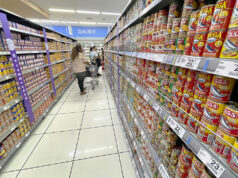WB affirms commitment to finance Marawi rehab
THE World Bank has affirmed its commitment to help fund the rehabilitation of Marawi City during a meeting with a Philippine delegation in Washington DC last week, according to the Department of Finance.
“We can only express all of our sympathy for what has been going on in Marawi,” World Bank Chief Executive Officer Kristalina Georgiev said during the meeting.
“As an institution that has committed to peaceful development and dealing with conflict situations, we would be honored in helping in terms of [re]building and engaging in any possible way what we can do in this situation,” she added.
Finance Secretary Carlos G. Dominguez III, who led the delegation, noted the need for World Bank technical advice and expertise in reconstructing Marawi, saying that the Philippine experience in a massive rehabilitation program is limited.
“The World Bank has the experience in reconstruction. We want to rebuild the entire city and keep a part of it as a memorial,” Mr. Dominguez said.
“(The rehabilitation of Marawi) is a complicated situation,” he added, noting the issue involving land titling for returning residents, many of whom are informal settlers living in multi-storey structures.
President Rodrigo R. Duterte announced yesterday the formal liberation of Marawi, following the death of the Maute group’s leaders on Monday.
The government has said it will issue P30 billion worth of bonds, with proceeds to be earmarked for the city’s repair.
So far, the Budget department has initially released P5 billion for the rehabilitation, which will be taken from the 2017 calamity fund and savings from 2016. This will then be followed by a P10 billion allocation from the 2018 calamity fund.
In a separate statement from Mr. Dominguez for the International Monetary Fund and World Bank Annual Meetings last week, he said that he expects Mindanao to lead the country’s economic expansion, and that neutralizing the terrorist threat is key to development.
“With abundant mineral resources and rich agricultural land, the island holds much potential for wealth creation. That potential has been stymied by many decades of armed conflict. The present leadership aims to achieve both peace and prosperity in Mindanao over the next few years,” he said.
“A major portion of our infrastructure investments will go to Mindanao, helping support business activity and reducing poverty,” Mr. Dominguez added.
According to the National Economic and Development Authority’s three-year rolling infrastructure plan, the poorest regions in the country — the Autonomous Region in Muslim Mindanao (ARMM), Caraga, Eastern Visayas, Soccsksargen, and Northern Mindanao — will get 1,313 infrastructure projects worth P157.44 billion, representing 16.82% of the total region-specific projects.
Among the six regions in Mindanao, the Davao region contributed the most to gross regional domestic product at 9.4%, followed by Northern Mindanao at 7.6%, Soccsksargen at 5%, Zamboanga Peninsula at 4.7%, Caraga at 2.5%, and ARMM at 0.3%.
The World Bank also said in its latest Philippine Economic Update report that “economic progress in the Philippines will depend on the success of economic development in Mindanao, as it is hard to see how the country can achieve sustained and inclusive growth without progress in this region.” — Elijah Joseph C. Tubayan



